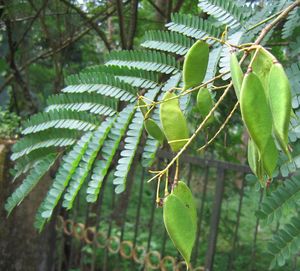Note: This is a project under development. The articles on this wiki are just being initiated and broadly incomplete. You can Help creating new pages.
Difference between revisions of "Caesalpinia sappan - Pathanga"
(→Photo Gallery) |
|||
| Line 3: | Line 3: | ||
[[File:Caesalpinia sappan1.jpg|thumb|right|''Pathanga'', ''Caesalpinia sappan'', ''Pattaranjaka'']] | [[File:Caesalpinia sappan1.jpg|thumb|right|''Pathanga'', ''Caesalpinia sappan'', ''Pattaranjaka'']] | ||
| − | + | '''Sappan Wood''' is a small thorny tree, 6-9 m in height and 15-25 cm in trunk diameter with a few prickly branches. Biancaea sappan is a prickly, shrubby tree that can grow up to 20 metres tall, but is usually smaller. | |
==Uses== | ==Uses== | ||
Revision as of 10:53, 27 April 2018
Sappan Wood is a small thorny tree, 6-9 m in height and 15-25 cm in trunk diameter with a few prickly branches. Biancaea sappan is a prickly, shrubby tree that can grow up to 20 metres tall, but is usually smaller.
Contents
Uses
Wounds, tuberculosis, dysentery, Curing liver disorders, Skin eruptions, Pimples, Diarrhea.
Parts Used
Chemical Composition
tectorigenin, sappanone, 3-deoxysappanone, sappanchalcone, 3-deoxysappanchalcone[1]
Common names
| Language | Common name |
|---|---|
| Kannada | Sappange |
| Hindi | Patamg, Bakam |
| Malayalam | Chappannam, Sappannam |
| Tamil | Sappamgu, Patamgam |
| Telugu | Bakaruchakka |
| Marathi | NA |
| Gujarathi | NA |
| Punjabi | NA |
| Kashmiri | NA |
| Sanskrit | Patrangah, Patangah |
| English | Sappan Wood, Brazil wood |
Habit
Identification
Leaf
| Kind | Shape | Feature |
|---|---|---|
| Simple | double-compound | alternately arranged, 20-45 cm long, 10-20 cm broad, with 8-16 pairs of up to 20 cm long side-stalks. Side-stalks are prickles at the base and with 10-20 pairs of oblong |
Flower
| Type | Size | Color and composition | Stamen | More information |
|---|---|---|---|---|
| Unisexual | 2-3 cm long | Yellow | 5-20 | Flowers Season is June - Augustand Stamens are waxy-white, filaments densely woolly at the base |
Fruit
| Type | Size | Mass | Appearance | Seeds | More information |
|---|---|---|---|---|---|
| woody pods | The heartwood which is used in medicine is light yellow when freshly cut, but it quickly changes to red | compressed with a hard recurved short beak | 3-4 seeds | {{{6}}} |
Other features
List of Ayurvedic medicine in which the herb is used
- Vishatinduka Taila as root juice extract
Where to get the saplings
Mode of Propagation
How to plant/cultivate
Sappanwood succeeds in semi-arid to moist tropical regions[3]
Commonly seen growing in areas
Secondary forest, near roadsides, forest-edges, limestone hills.
Photo Gallery
References
External Links
Categories:
- Pages that are stubs
- Ayurvedic Herbs known to be helpful to treat Wounds
- Ayurvedic Herbs known to be helpful to treat tuberculosis
- Ayurvedic Herbs known to be helpful to treat dysentery
- Ayurvedic Herbs known to be helpful to treat Curing liver disorders
- Ayurvedic Herbs known to be helpful to treat Skin eruptions
- Ayurvedic Herbs known to be helpful to treat Pimples
- Ayurvedic Herbs known to be helpful to treat Diarrhea
- Herbs with Dried Folaige used in medicine
- Herbs with Whole herb used in medicine
- Herbs with common name in Kannada
- Herbs with common name in Hindi
- Herbs with common name in Malayalam
- Herbs with common name in Tamil
- Herbs with common name in Telugu
- Herbs with common name in Sanskrit
- Herbs with common name in English
- Habit - Tree
- Index of Plants which can be propagated by Seeds
- Index of Plants which can be propagated by Cuttings
- Herbs that are commonly seen in the region of Secondary forest
- Herbs that are commonly seen in the region of near roadsides
- Herbs that are commonly seen in the region of forest-edges
- Herbs that are commonly seen in the region of limestone hills
- Herbs







